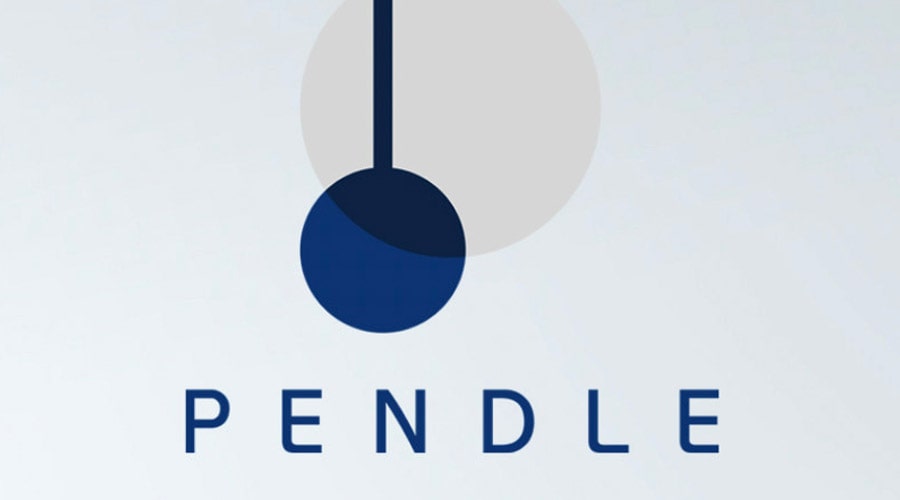Pendle (PENDLE) is a protocol designed for trading tokenized yield, enabling users to trade future yield separately from the principal asset. As the crypto market grows, tools that automate the trading process have become essential for both newcomers and experienced traders. One such tool is the Pendle trading bot, a solution that optimizes trading on the platform, enhancing efficiency and removing the need for manual intervention.
Trading bots have revolutionized the way users interact with financial markets, and Pendle’s unique system offers various benefits for those looking to maximize returns on yield tokenization. From executing trades at high speeds to leveraging advanced algorithms, Pendle trading bots by Argoox can help traders make the most of the opportunities provided by this innovative protocol.
What is the Role of Pendle (PENDLE) Trading Bot?
Pendle trading bots serve as automated programs designed to conduct trades on behalf of users based on predefined strategies. Their primary role is to enhance efficiency, minimize human error, and capitalize on market opportunities, especially in the fast-moving environment of yield trading. By automating processes like yield token swaps and managing expiration dates, these bots ensure that traders can continuously manage their portfolios without the need for constant oversight.
How Do PENDLE Trading Bots Work?
Pendle trading bots are integrated with the Pendle platform to automate yield trading activities. They function by connecting to the user’s account through APIs, fetching real-time data, and executing trades according to the parameters set by the user. These bots can analyze market conditions, monitor liquidity pools, and conduct yield optimization strategies based on the available data. Additionally, users can set triggers that dictate when the bot should execute a trade, such as price changes or fluctuations in the yield rate.
Benefits of Using Pendle (PENDLE) Trading Bots
There are several advantages to employing a Pendle (PENDLE) trading bot:
- Increased Efficiency: Bots can execute trades at a speed and frequency beyond human capability, ensuring users never miss a market opportunity.
- Minimized Emotional Trading: By relying on algorithms, traders avoid the pitfalls of emotional decision-making, focusing solely on data-driven actions.
- 24/7 Market Monitoring: Bots operate continuously, even when traders are offline, making it possible to respond to changes in market conditions instantly.
- Yield Optimization: Bots can optimize strategies for yield trading, ensuring that users get the best possible returns by automating key decisions.
What are Best Practices for Running PENDLE Trading Bots?
Running a Pendle trading bot successfully requires attention to detail and strategic planning:
- Set Clear Goals: Define the objectives of the bot, whether it is maximizing yield, minimizing risk, or balancing both.
- Monitor and Adjust Parameters: Regularly review the bot’s performance and adjust the strategy if market conditions shift or the results aren’t as expected.
- Security Measures: Ensure that API keys are secure, and consider using multi-signature wallets to enhance protection against hacks.
- Risk Management: Implement stop-loss mechanisms and diversification strategies to protect your assets from unexpected market downturns.
How Make Pendle (PENDLE) Trading Bot with Code?
Building a Pendle (PENDLE) trading bot requires several key steps, from API integration to strategy development. Below is a more structured approach to coding a basic trading bot using Python, which interacts with the Pendle API.
Setup and Requirements
Before you start coding, make sure you have the necessary tools and libraries installed. You will need the following:
- Pendle API: Obtain your API key from the Pendle platform to access your account and execute trades.
- Python: The programming language we’ll use for this bot.
- Libraries: You’ll need requests for API communication, Pandas for data management, and time to time the bot’s execution.
Install the required Python packages by running:
pip install requests pandasBasic Bot Structure
The core of the bot will include functions for fetching market data, analyzing it, and executing trades based on a chosen strategy. Below is an example of a Pendle trading bot structure.
import requests
import time
import pandas as pd
# Pendle API URL and User Authentication
API_KEY = 'your_api_key_here'
BASE_URL = 'https://api.pendle.finance/'
# Function to get market data from Pendle
def get_market_data():
url = BASE_URL + 'market_data_endpoint' # Replace with actual endpoint
headers = {'Authorization': f'Bearer {API_KEY}'}
response = requests.get(url, headers=headers)
if response.status_code == 200:
data = response.json()
return pd.DataFrame(data) # Convert data to a pandas DataFrame for analysis
else:
print("Error fetching data:", response.status_code)
return None
# Function to analyze market data and decide whether to buy or sell
def analyze_market(data):
# Example analysis: buy when price drops by 5% or more
if data is not None:
current_price = data['price'].iloc[-1]
historical_price = data['price'].iloc[-10] # Price 10 periods ago
if (current_price / historical_price) < 0.95:
return "buy"
else:
return "hold"
# Function to execute trades on Pendle
def execute_trade(decision):
if decision == "buy":
trade_data = {
'pair': 'PENDLE/ETH',
'action': 'buy',
'amount': 100 # Amount in USD or equivalent
}
url = BASE_URL + 'execute_trade_endpoint' # Replace with actual endpoint
headers = {'Authorization': f'Bearer {API_KEY}'}
response = requests.post(url, headers=headers, json=trade_data)
if response.status_code == 200:
print("Trade executed successfully!")
else:
print("Error executing trade:", response.status_code)
# Main function to run the bot continuously
def main():
while True:
market_data = get_market_data()
trade_decision = analyze_market(market_data)
execute_trade(trade_decision)
time.sleep(60) # Pause for 1 minute before checking again
if __name__ == "__main__":
main()Explanation of Code Components
- API Integration: The bot interacts with Pendle’s API by sending authenticated requests to fetch market data and execute trades.
- Market Data Fetching: The get_market_data function retrieves the latest market data and stores it in a pandas DataFrame for analysis.
- Trade Analysis: The analyze_market function runs a simple analysis to check if the price has dropped by 5% or more, triggering a buy signal.
- Trade Execution: If the bot decides to buy, the execute_trade function sends a request to Pendle’s API to execute the trade.
- Looping for Automation: The bot runs continuously, fetching market data and making trading decisions every minute (time.sleep(60)).
Enhancing the Bot
Once you have a basic bot running, you can enhance its functionality by adding features like:
- Stop-Loss and Take-Profit: Add conditions to exit trades at a loss or a profit.
- Multiple Strategies: Implement different strategies like arbitrage or market-making.
- Error Handling and Logging: Improve the bot by adding better error handling and logs for tracking performance.
Here’s an enhanced example of adding stop-loss functionality:
def analyze_market(data):
current_price = data['price'].iloc[-1]
buy_price = data['price'].iloc[-10]
# Buy signal when price drops by 5%
if (current_price / buy_price) < 0.95:
return "buy"
# Sell if the price has increased by 10%
elif (current_price / buy_price) > 1.1:
return "sell"
else:
return "hold"Tools, Libraries, and Technologies Used
- Pendle API: The official API from Pendle that accesses market data and executes trades.
- Python or JavaScript: Popular languages for bot development due to their extensive libraries and ease of use.
- Pandas/Numpy: For data analysis and managing large datasets.
- WebSocket: For real-time market data streaming and faster trade execution.
- Docker: For deploying and running bots in isolated environments.
What are Key Features to Consider in Making Pendle (PENDLE) Trading Bot?
When developing a Pendle trading bot, the following features are essential:
- Real-Time Data Access: The bot should have access to live market data to make accurate decisions.
- Customizable Trading Strategies: Users should be able to set their own strategies and modify parameters easily.
- Security: API access should be securely handled, and the bot should have protections against unauthorized trades.
- Backtesting: The bot should include a feature for backtesting strategies using historical data.
What are Different Types of Pendle (PENDLE) Trading Bots?
Several types of Pendle trading bots exist, each catering to different trading needs:
- Arbitrage Bots: These bots exploit price discrepancies between different yield pools or platforms.
- Market-Making Bots: They provide liquidity in exchange for profits from the differences in buy and sell prices.
- Trend-Following Bots: These bots analyze historical data to make trades according to market trends and indicators.
- Mean Reversion Bots: They trade based on the assumption that asset prices will return to their historical mean over time.
Disadvantages of Using Pendle (PENDLE) Trading Bots
Despite their benefits, Pendle trading bots come with some drawbacks:
- High Initial Setup Cost: Developing and maintaining a high-performing bot requires investment in both time and resources.
- Technical Complexity: Not all users have the programming knowledge required to build or customize a bot.
- Market Risk: While bots can automate trades, they cannot eliminate the inherent risk in trading. Poorly configured bots can result in significant losses.
Challenges in Building Pendle (PENDLE) Trading Bots
Building a Pendle trading bot presents unique challenges, including:
- Market Volatility: The rapidly changing nature of the cryptocurrency market makes it difficult for bots to predict price movements consistently.
- API Limitations: Some limitations in API functionality may hinder the bot’s ability to execute certain trades.
- Security Threats: Bots connected to live exchanges are vulnerable to cyber-attacks if not properly secured.
Are Pendle (PENDLE) Trading Bots Safe to Use?
Pendle trading bots can be safe when built with proper security measures in place. Users should ensure that API keys are protected and that any personal data is stored securely. Additionally, using bots on reputable platforms like Pendle with well-documented APIs reduces the risk of hacks or unauthorized access.
Is it Possible to Make a Profitable Pendle Trading Bot?
Yes, it is possible to create a profitable Pendle trading bot, but success depends on several factors, including the trading strategy employed, the market conditions, and how well the bot is managed. Regular monitoring, adjustment of strategies, and risk management are crucial for profitability.
Conclusion
Pendle (PENDLE) trading bots provide a powerful tool for automating yield trading, enhancing efficiency, and maximizing returns. By following best practices, ensuring security, and fine-tuning strategies, traders can benefit greatly from these bots. Argoox offers global solutions with AI-powered trading bots, making it easier for traders to optimize their operations in the financial and cryptocurrency markets. Visit Argoox today to explore how AI bots can transform your trading experience.




